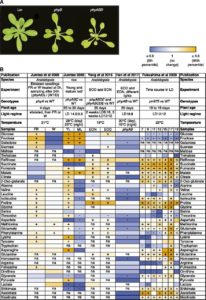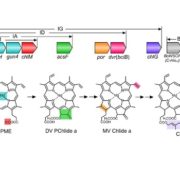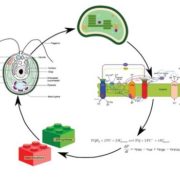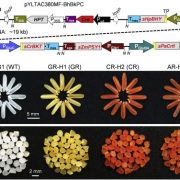Update: Phytochrome, Carbon Sensing, Metabolism, and Plant Growth Plasticity
 By Johanna Krahmer, Ashwin Ganpudi, Ammad Abbas, Andrés Romanowski, and Karen J. Halliday
By Johanna Krahmer, Ashwin Ganpudi, Ammad Abbas, Andrés Romanowski, and Karen J. Halliday
Plants continuously monitor fluctuations in their environment and actively adjust their metabolism to cope with variations in light and carbon resource availability. However, the links between photoreceptor signaling pathways and central metabolism are poorly understood. Emerging evidence suggests that phytochrome photoreceptor signaling and carbon resource management are strongly coupled. In this review, we outline the current understanding of how phytochrome-dependent light signaling interfaces with metabolism and carbon resource management.
The ability to sense and react to the light environment enables plants to adapt to and thrive in a changing environment. Post germination, seedlings adopt either a skotomorphogenic or photomorphogenic developmental program, depending on whether light is available. The skotomorphogenic strategy is adopted by dark-grown seedlings, which exhibit elongated hypocotyls and closed cotyledons that are folded against the hypocotyl in a so-called apical hook. This growth program relies on seed reserves to seek light through rapid hypocotyl extension. By contrast, when exposed to light, seedlings undergo photomorphogenic growth, which typically prevents hypocotyl elongation and, instead, promotes cotyledon expansion and greening, processes that enable seedlings to begin photoautotrophic growth. To support photomorphogenic development, plants have evolved multiple families of photoreceptors that capture a wide range of the light spectrum. These include UVB-RESISTANCE8, which detects UV-B light, cryptochromes (crys), phototropins, and the ZEITLUPE/FLAVIN-BINDING, KELCH REPEAT, F BOX 1/LOV KELCH PROTEIN2 family of photoreceptors, which absorb UV-A and blue light, and the phytochromes (phys), which sense red (R) and far-red (FR) light (Galvão and Fankhauser, 2015). This review will focus on the phy photoreceptors, whose unique photosensory properties can profoundly influence plant growth and development.









